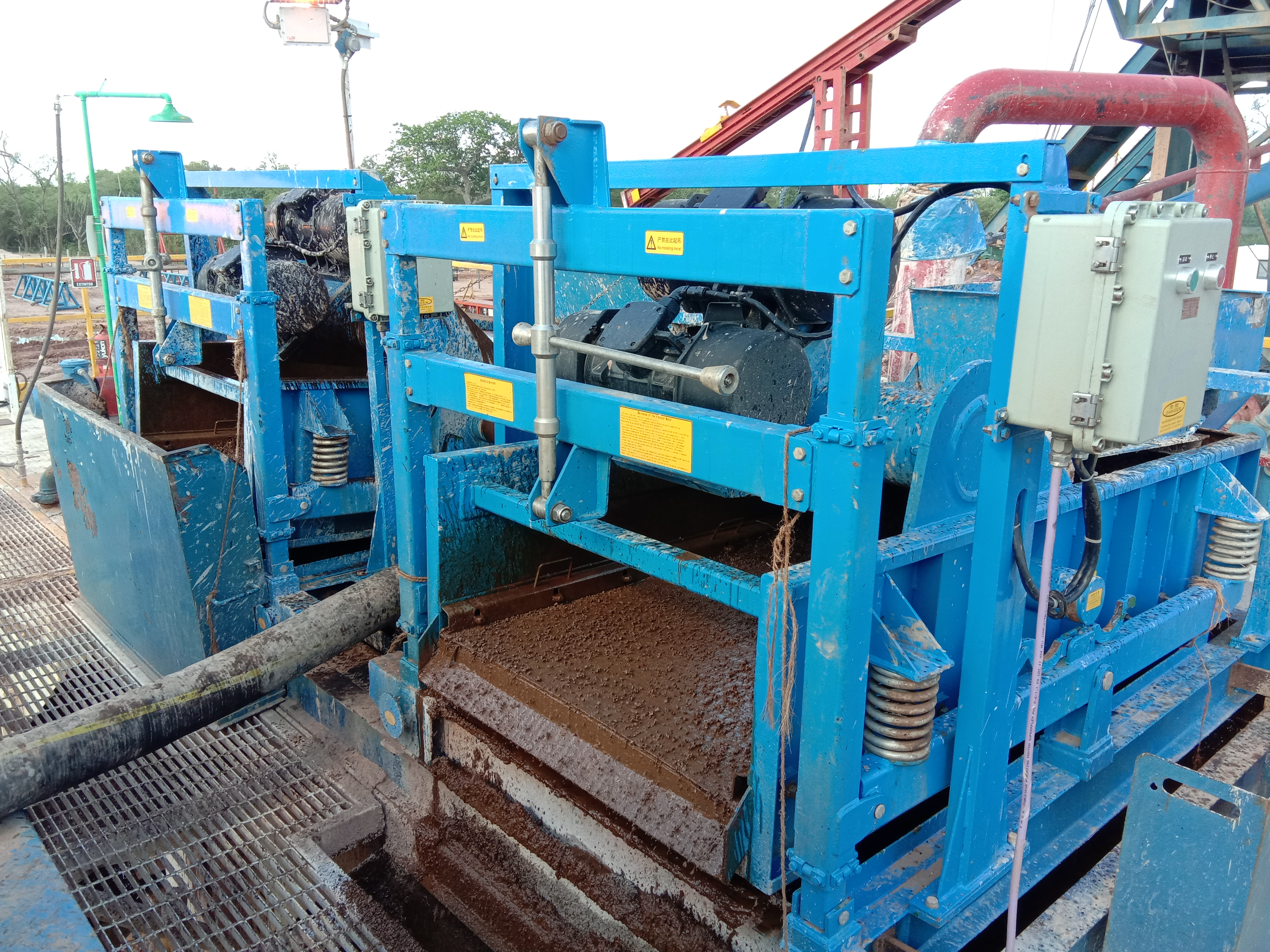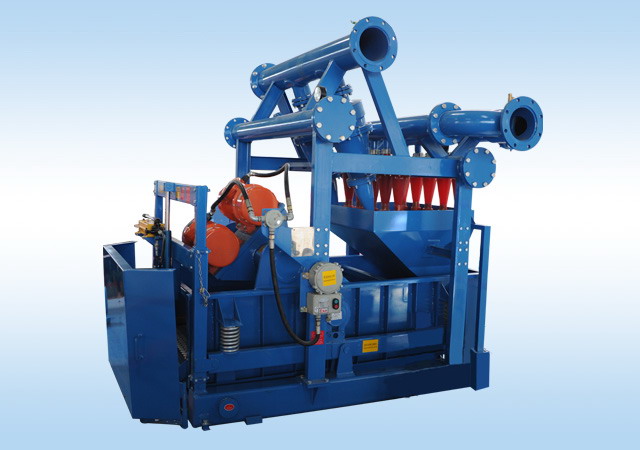Cuttings are major harmful solids in drilling fluid and affect physical properties of drilling fluid during the whole drilling process, increasing density, viscosity, yield point, water loss, mud cake, abrasiveness, glutinousness and flow resistance of drilling fluid. During drilling process, cuttings may even damage oil and gas reservoirs, reduce ROP, increase rotary table torque and cause blockage during tripping, even resulting in lost circulation, blowout and other complex downhole problems. Besides, cuttings in drilling fluid seriously abrade the circulating system.
The key point for achieving drilling fluid recycling is to effectively treat the harmful solids contained within. Solids control system can effectively achieve such a goal. In the system, shale shaker can remove harmful solids with diameter ≥74μm, desander can remove those with diameter of 44~74μm, desilter can remove those with diameter of 15~44μm (high efficiency cleaner is a kind of equipment integrating both desander and desilter and can remove harmful solids of 15~74μm) and centrifuge can remove those with diameter ≥2μm. Mud density may not be too high during normal operation to reach its performance requirements, so the density must be reduced to a proper value, and solids with diameter less than 15μm need to be treated by centrifuge. If barite is required to be recycled while treating harmful solids, a high speed centrifuge is necessary.

Thus it can be seen that drilling fluid can be recycled through the above sequential treatment by solids control system, which greatly saves drilling cost and enhances drilling profit.

KOSUN Alibaba Online Shopping Station
Copyright ©1992-2020 Xian KOSUN Environmental Engineering Co., Ltd.